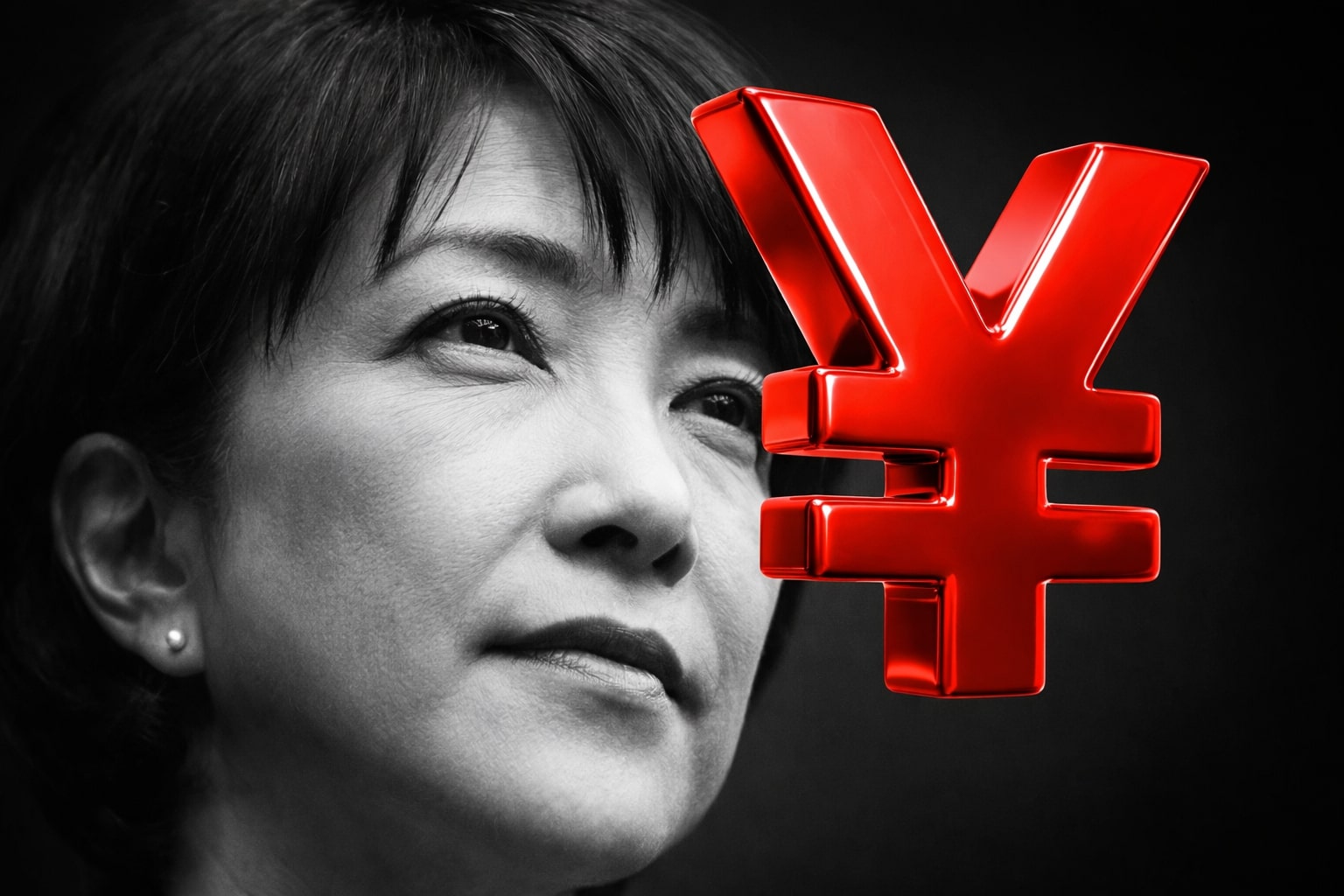
USD/JPY Price Forecast - Yen Climbs Toward 155.00 As Policy Divergence and Missing U.S. CPI
The pair rebounds to 154.60 after a nine-month high at 155.04 as Tokyo weighs intervention, U.S. PPI becomes the swing catalyst, Japan’s 2.7% October PPI cools despite a 4.2% yen drop | That's TradingNEWS
Usd/Jpy Extends Its Nine-Month Push As Policy Divergence, Missing U.S. Data And Reopening Momentum Break The Yen’s Defenses
USD/JPY trades near 154.60, recovering sharply from the intraday slide toward 153.62, and the pair sits less than half a point from the nine-month high at 155.04 that briefly emerged earlier in the week. This rebound forms in a moment where the U.S. Dollar rebuilds composure after the government reopening, even though the economic picture remains distorted by the shutdown, delayed releases, and the admission from U.S. officials that October CPI data may never be finalized. The Japanese side faces its own pressures, with a new administration signaling aggressive fiscal expansion while the Bank of Japan avoids tightening commitments and warns of cooling inflation. Together, these forces pull USD/JPY into one of the most unstable zones of the year, where political signals, inflation uncertainty, and intervention risk collide with the market’s preference to reward the Dollar’s relative strength.
Usd/Jpy Reacts To A Data Vacuum In The U.S. As Officials Confirm October Cpi Breakdown And Leave Traders Without A Critical Inflation Anchor
The U.S. economy has entered an unusual period where traders must position without the single most influential data point for short-term monetary policy. The Bureau of Labor Statistics confirmed that the October CPI dataset was not fully collected, introducing the possibility the reading may never be released. The September employment report is still being processed and may arrive next week, leaving USD/JPY without the macro heartbeat that normally shapes its volatility. This uncertainty did not weaken the Dollar; instead, USD/JPY advanced as traders began pricing a world where the Fed’s stance becomes more dependent on commentary than data. The combination of an incomplete CPI cycle and a reopening government created a brief risk window for speculators to re-accumulate Dollars, especially with USD/JPY already riding a four-session winning streak.
Usd/Jpy Strengthens As Fed Officials Push Back Against Early Rate-Cut Bets And December Cut Odds Collapse From 94% To 49%
Federal Reserve commentary has become the central force cushioning USD/JPY. A month ago, markets priced a 94% probability of a December rate cut; today those odds sit near 49%, reflecting hesitation from policymakers who repeatedly highlight inflation risks despite softening labor indicators. Kansas City Fed President Jeffery Schmid reinforced the stance that monetary policy should continue leaning against demand, calling existing rates “modestly restrictive” and dismissing the notion that structural labor shifts justify early easing. The market interpreted this combination as an argument for a longer plateau in U.S. rates. With yield spreads still tilted toward the Dollar, USD/JPY regained traction toward the 155.00 line and held weekly gains even as broader USD moves softened against European currencies.
Usd/Jpy Faces A Weakening Yen As The New Japanese Administration Prioritizes Expansionary Fiscal Support While Leaving Boj Policy Ambiguous
Japan’s political and monetary backdrop intensifies downward pressure on the Yen. Prime Minister Sanae Takaichi’s administration promotes a more aggressive fiscal stance, pairing stimulus-heavy commitments with a tone that suggests continued reliance on accommodative monetary settings. Although Finance Minister Satsuki Katayama acknowledges the mounting economic damage from a weaker Yen and insists the government is monitoring moves with urgency, these warnings stop short of a clear intervention strategy. The Bank of Japan adds volatility by signaling cooling inflation in its Summary of Opinions for H1 2026, emphasizing uncertainty over wages, tariffs, and price stability. The lack of unified policy direction leaves traders with an easier path toward USD/JPY upside unless the pair climbs too quickly into the known intervention zone.
Usd/Jpy Trades Inside The 155–160 Intervention Zone As Market Tests Tokyo’s Patience Without A Central Bank Willing To Tighten
The most notable structural risk for USD/JPY is not policy divergence but the proximity to levels historically associated with intervention threats. USD/JPY entered the 155–160 zone this week, an area where Japanese authorities acted in past cycles. The pair touched 155.044, a nine-month high, before mild profit-taking forced a pause. Even with the pullback, USD/JPY holds a 1.2% gain since the BoJ’s October decision, a period marked by its soft inflation outlook and absence of hawkish urgency. Tokyo has issued two verbal warnings in recent weeks, attempting to slow the advance without intervening. The political challenge is clear: acknowledge the damage of a weak currency while simultaneously supporting fiscal expansion and maintaining an ultra-gradual BoJ stance. That conflict becomes the foundation upon which USD/JPY keeps finding strong bids into every dip.
Usd/Jpy Absorbs Japan’s Producer Price Data As October’s 2.7% YoY Reading Shows Cooling Despite A 4.2% Jpy Drop In The Prior Month
Japan’s producer price index delivered another data point reinforcing the BoJ’s reluctance to signal tightening. October PPI rose 2.7% YoY, slightly below September’s 2.8%, though above the 2.5% expectation. Under normal conditions, a 4.2% Yen depreciation in October would have transmitted significantly stronger import-driven price pressure, yet producer prices fell. This divergence signals either broad demand softness or delayed pass-through—both cases consistent with the BoJ’s caution. Immediately after the PPI release, USD/JPY dropped toward 154.690 but swiftly reversed to 155.017, demonstrating that the market interpreted the reading as another block against hawkish expectations. Traders continue to assume the BoJ will place heavier weight on upcoming data, not October’s, which reduces the probability of tightening even further.
Read More
-
IVE ETF Near $212: Is This S&P 500 Value Play Still Cheap for 2026?
20.12.2025 · TradingNEWS ArchiveStocks
-
XRP ETFs XRPI at $11.07 and XRPR at $15.76 Power $1.2B Inflows as XRP Fights for $2
20.12.2025 · TradingNEWS ArchiveCrypto
-
Natural Gas Price Forecast: NG=F Tests $3.60 Support as LNG Boom and $5 Henry Hub Calls Build Into 2026
20.12.2025 · TradingNEWS ArchiveCommodities
-
USD/JPY Price Forecast - Pairs Surges After BoJ’s 0.75% Hike as Pair Eyes 161.50 Resistance
20.12.2025 · TradingNEWS ArchiveForex
Usd/Jpy Finds Additional Tailwind As Japan Demands Regular Boj Reporting While Reinforcing The Priority Of Growth Over A Stronger Yen
Japan’s political messaging this week carried a key market signal: the government wants visibility, not immediate policy tightening. Prime Minister Takaichi’s request for regular BoJ reports shows heightened scrutiny but does not introduce any framework for hawkish pressure. Her statement stressing the dual goals of strong economic growth with stable price increases points toward a policy mix that continues accommodating demand rather than suppressing currency weakness. With USD/JPY having risen 5% since Takaichi won the LDP leadership in October, this alignment between fiscal ambition and cautious monetary positioning keeps Yen depreciation a structural theme. Intervention threats exist, but they serve more as volatility triggers than active deterrents.
Usd/Jpy Watches U.S. Ppi And Retail Sales As The Next Major Price Shocks After Shutdown-Disrupted Data Cycle
The next catalysts for USD/JPY come from two U.S. releases: producer prices and retail sales. Both are expected to reveal distortions created by the shutdown. Stronger producer prices would support the view that inflation pressure persists, weakening the argument for a December rate cut and pushing USD/JPY back toward 155.00. Conversely, weak retail sales tied to shutdown effects may redirect the conversation toward slowing consumption. The market’s sensitivity to inflation remains extremely high because the delayed or missing CPI data concentrates attention on PPI as a proxy. With rate-cut odds falling from 69.6% on November 6 to 50.7% on November 13, an upside PPI surprise could change positioning instantly.
Usd/Jpy Navigates The Tightest Policy Divergence In Asia As The Fed Stays Guarded And The Boj Hesitates To Define A Hike Path
The broader USD/JPY outlook remains shaped by the gap between a Federal Reserve unwilling to declare victory on inflation and a Bank of Japan moving cautiously despite rising wage negotiations and long-term pricing shifts. Traders continue assessing the point where narrowing rate differentials could reverse USD/JPY’s bias, but current conditions favor Dollar strength. The risk window is defined by whether markets believe the Fed could pivot toward economic support instead of inflation control. Until then, divergence remains a bullish structural force, even as intervention threats moderate the speed of the climb.
Usd/Jpy Technical Structure Reinforces Upside Bias With 153.95 As Strong Support, 155.55 As Ceiling And A Transitional Zone Near 154.30–154.10
The technical map mirrors the fundamental landscape. USD/JPY maintains a firm upside configuration, supported by the 153.95 line that analysts view as the level whose failure would neutralize the bullish bias. Short-term structure includes support clusters at 154.30 and 154.10, while resistance builds at 155.20 and peaks near 155.55. A break above 155.00 exposes the pathway toward government discomfort, raising the probability of verbal intervention. Yet, even if warnings emerge, traders will likely view dips toward 154.45 or 153.23 as strategic re-accumulation zones while the broader divergence persists.
Final Verdict On Usd/Jpy
Based on the full breadth of data—Fed cut odds collapsing from 94% to 49%, U.S. inflation uncertainty, Japan’s 2.7% PPI cooling, BoJ hesitation, Prime Minister Takaichi’s expansionary stance, a 5% USD/JPY rally since October, intervention risk between 155–160, and firm structural support at 153.95—USD/JPY is a BUY on pullbacks, not a breakout chase, with bullish bias intact until 153.95 fails.



















